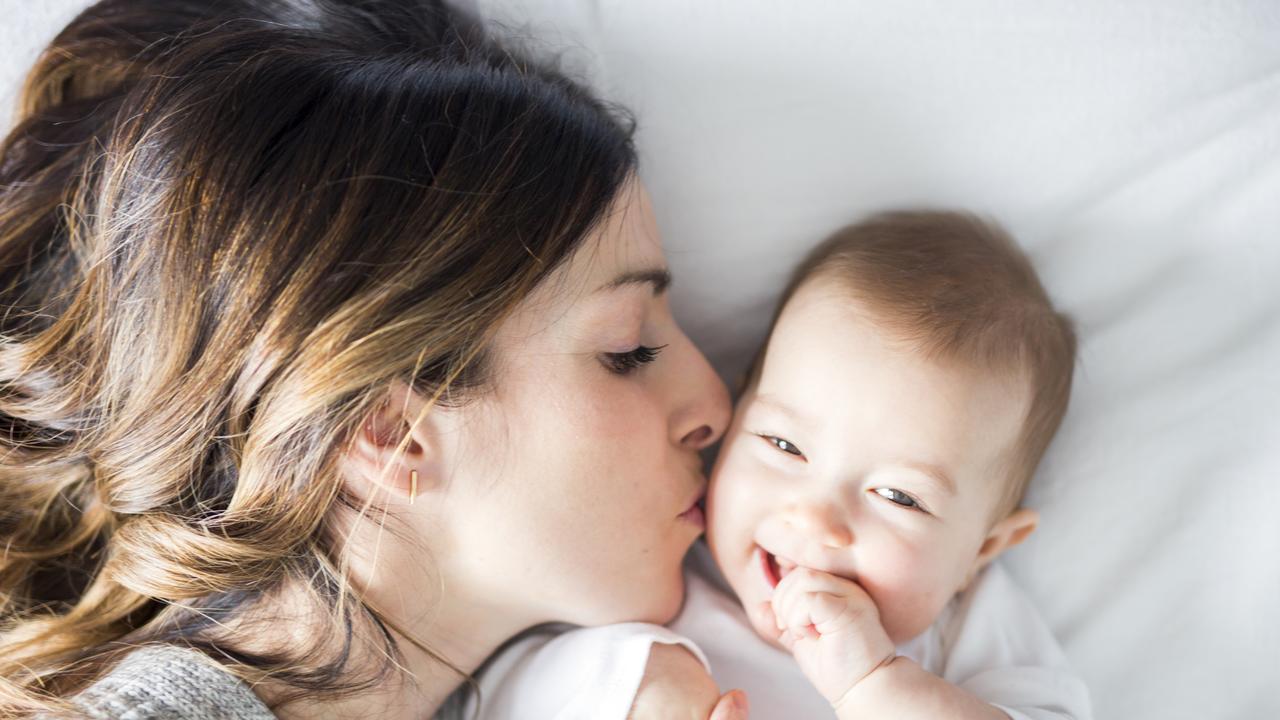I went to Kangaroo Island, this stunned me
When you’ve got an environment this spectacular it takes a community to care for it.
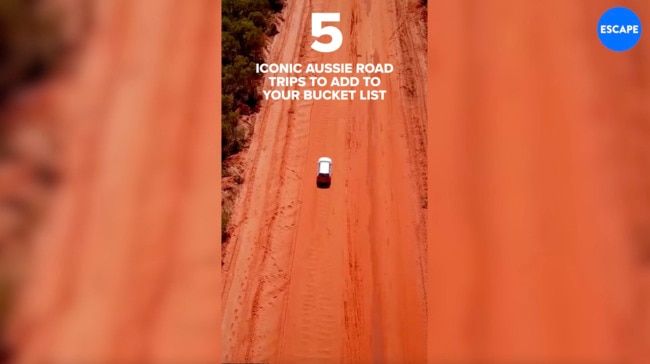
Lifestyle
Don't miss out on the headlines from Lifestyle. Followed categories will be added to My News.
W ild turkeys roam between rows of vines at False Cape Wines, in the far-eastern corner of Kangaroo Island.
These aren’t your common brush turkey found in the scrub on the mainland. They’re your American-style turkey and, aside from delighting visitors, their purpose is to forage for pests, reducing the need for pesticides at this South Australian vineyard.

In winter, the turkeys are joined by sheep that gobble up weeds and fertilise the soil, before they’re relocated ahead of the sprouting of new vine shoots. These are just two ways False Cape Wines, the largest vineyard on Kangaroo Island, looks after the environment.
Red grapes are also “dry grown”, eliminating the need for irrigation, the farm is 100 per cent off-grid, and – one of my favourite aspects – the cellar door and cafe has been built out of reclaimed materials. The cellar door took four years to build, says co-owner Julie Helyar, with old jetty timbers used in the construction, along with kangaroo-printed bricks from an old brickworks in Penneshaw, where the SeaLink ferry docks. Tables were made using timbers from a demolished house.
Another example of conscious farming on Kangaroo Island can be found near Kingscote, at family-owned Bellevista. The farmers here rotate their crops with legumes, which not only add nitrogen to the soil but increase the organic matter, ensuring the earth stays healthy. Bellevista is a sheep farm (for wool and lamb), but also grows wheat, canola and broad beans.
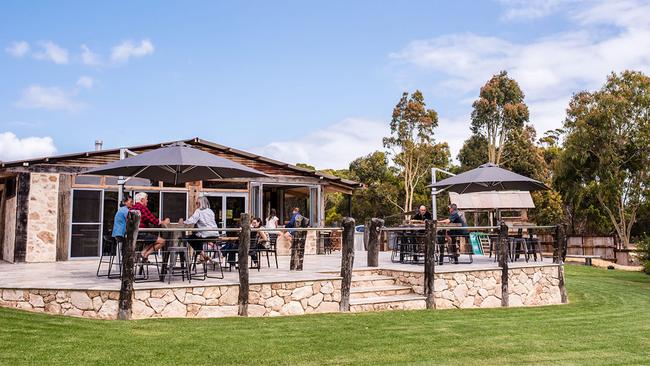
Marine stewards
Sustainable practices are not only implemented at vineyards and farms. At one of Kangaroo Island’s star attractions, Seal Bay Conservation Park, employees go beyond what is expected of them. During their working hours, rangers lead tourists along an elevated timber boardwalk, past Australian sea lions sleeping in dune hillocks, to a windswept beach where more sea lions come ashore to recuperate. Small groups are kept at a safe distance from the sea lions (for their sake and likely ours) as they learn about the animals’ behaviours and how they became endangered after being hunted close to extinction in the 19th century.
When employees clock off work, they scour the sand for marine waste, such as micro plastics, washed ashore at Seal Bay and other beaches. Once a month, the volunteers sort through the debris, recording whether the rubbish is, for example, wetsuit fabric or from a foam buoy, food packaging or broken glass.
In June 2023, for example, approximately 1380 pieces of micro plastic, fishing line and other debris were collected. During my Seal Bay tour, I pocket several pieces of rubbish until I return to the visitor centre and am handed a small bucket labelled “marine pollution”. The centre also has educational displays about the waste, including the threat of fishing nets to the sea lions.
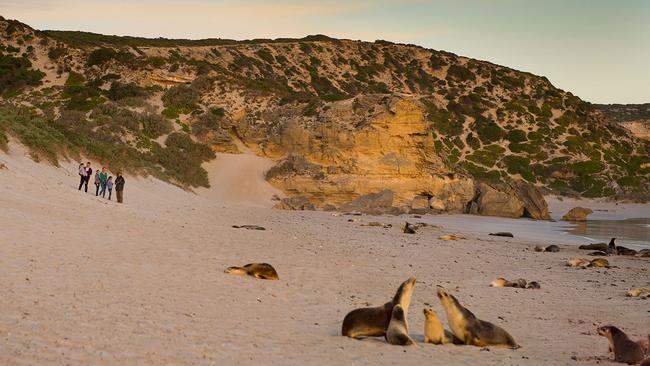
Island regeneration
The beaches on Kangaroo Island are a large drawcard for tourists, as is the incredible array and density of animals here, from the sea lions and ’roos to koalas, echidnas and birds of prey. An eradication program aims to remove feral cats from the entire island as they are a major threat to the native animals, including dunnarts and bandicoots.
“It’s hugely important for the diversity of species here,” says Exceptional Kangaroo Island guide Michael Caspar.
Exceptional Kangaroo Island is a leading sustainable tourism business in South Australia, and has had advanced Eco Certification with Ecotourism Australia for 25 years. Among its practices, the business has a low-waste focus, with all food scraps from its tours fed to the owner’s own chickens or used as compost on his orchards. Exceptional Kangaroo Island offers multiple tours, including the three-day Conservation Connection, which delves into island management and includes meeting wildlife experts.
I’m on a custom day tour, and Michael leads me to a few little-known sights, including a fascinating former storehouse for light-keeper supplies, and more famous ones, such as Flinders Chase National Park, ravaged by bushfires in the summer of 2019-20. Four years after the fires, the recovering landscape is flourishing. “These were the worst bushfires we’ve had here in living memory,” says Michael, “and it’s only taken a few years to get back to close to where it used to be. It’s a really good example of how the Australian ecosystem can handle devastating events.”
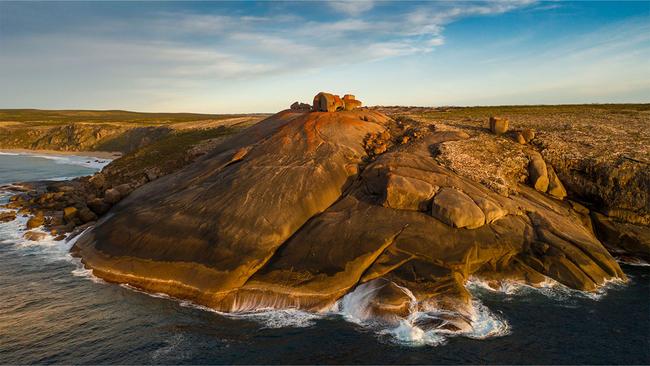
Eco living
At seaweed-strewn Stokes Bay I spot compostable dog poo bags for walkers. Let me repeat: compostable. I’d like to see more of that from NSW councils. I use a bag to collect the odd bit of plastic tangled in the seaweed but, thankfully, I don’t find much. It’s little things like these bags, and the marine debris collection days by Seal Bay rangers, that hammer home how connected Kangaroo Island residents are with their environment. It’s their way of life.
Not far from Stokes Bay is Emu Bay Lavender Farm, where about 800 plants are hand-harvested. The farm is owned by fifth-generation islanders and the cafe and boutique is open year-round. Although the lavender isn’t in flower during my visit, I sample some in a lavender and lemon myrtle tea, while learning about the owners’ recent investment in solar and future plans to move off-grid. Currently, part of the 20ha property is leased out for merino sheep, but eventually they will be moved off and the land regenerated, with plans for more lavender and a walking trail.
This move from an island once consumed by sealers and sheep graziers to farmers and producers increasingly in tune with the environment is an example of how we can adapt and better live with the nature that sustains us.
The writer travelled as a guest of South Australian Tourism Commission.
More Coverage
Originally published as I went to Kangaroo Island, this stunned me



